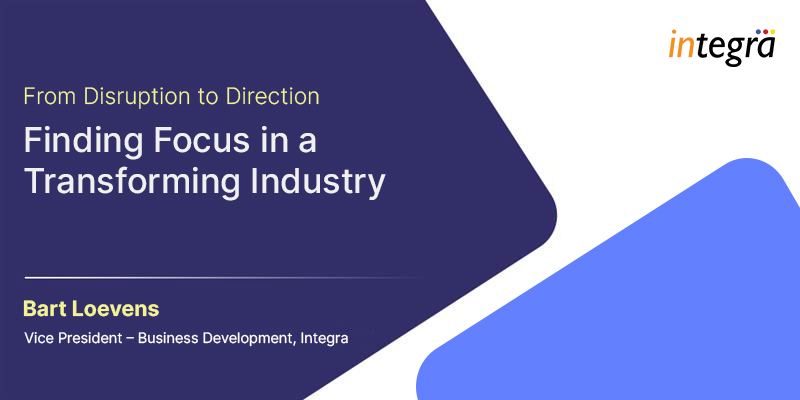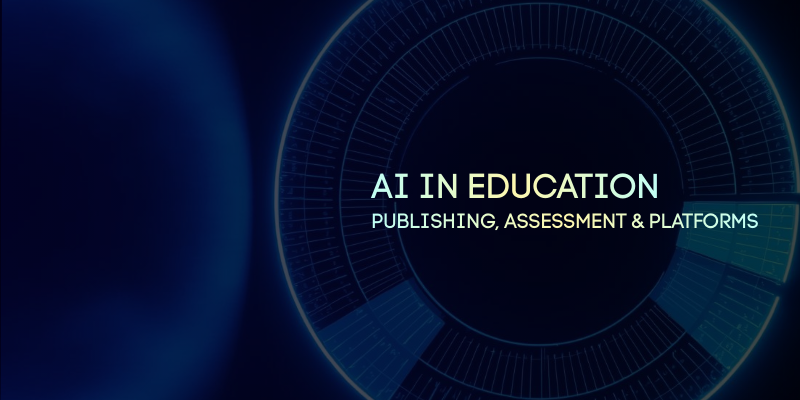Strategic Standards Alignment in K–12 Education through Smart Content and Intelligent Infrastructure

As K–12 educational standards evolve and diversify, publishers and content providers face mounting challenges in achieving and maintaining alignment across curriculum, pedagogy, and assessment. Misalignment leads to fragmented learning experiences, while reactive fixes inflate costs and reduce instructional impact. This article outlines five strategic pillars to improve alignment across the content lifecycle, anchored in expert insight and enhanced through AI augmentation.
Drawing from current educational needs and real-world publishing constraints, it presents an integrated model that improves operational efficiency, pedagogical integrity, and content scalability. Integra’s services and platforms, including its AI-enabled Quixl suite, illustrate how technology and expertise can jointly streamline this complex process.
Curriculum Alignment as a Pedagogical Foundation
Curriculum alignment remains one of the most under-leveraged strategies in improving K–12 educational outcomes. When instructional content, pedagogical strategy, and assessment are developed in silos, the result is often misaligned learning experiences. These gaps may not be immediately visible, but over time, they compound, especially for students requiring consistency to build foundational knowledge. Misalignments between intended and implemented curricula can quietly lead to persistent learning gaps, disproportionately affecting students in under-resourced environments.
By contrast, well-aligned curricula support instructional coherence. This means that what is taught in the classroom directly reflects both what students are expected to learn and how that learning is measured. When these components are synchronized, teachers can focus less on adapting or supplementing content on the fly and more on delivery and personalization.
Curriculum alignment is not a static process. It involves aligning not just across individual content pieces, but across grade levels, modalities, and instructional contexts. When content, pedagogy, and assessment are aligned by design, it becomes easier to ensure robust and consistent instructional quality. It also reduces friction for teachers adapting materials for diverse classroom settings.
For content developers and education service providers, this represents both a challenge and an opportunity. Strategic curriculum alignment, done early in the development cycle, reduces the need for costly retrofitting and increases the transferability of materials across districts. Firms that build alignment into their content architecture can offer greater value to K–12 institutions navigating diverse and evolving educational standards.
Standards Alignment – More than Compliance
Standards alignment is frequently approached as a compliance task, something to check off during curriculum audits or adoption cycles. However, reducing it to a formality risks compromising both instructional integrity and operational efficiency. In reality, standards alignment is a design function that should guide content architecture from the outset.
A robust alignment strategy requires more than mapping standards to lesson plans. It involves multi-dimensional coordination, understanding the semantic nuances of standards, ensuring coherence across curricular levels, and embedding valid assessments that reflect the cognitive complexity demanded by each standard. For instance, a single standard may demand both conceptual understanding and procedural fluency, requiring differentiated instructional support.
Friction often emerges due to fragmented frameworks and frequently shifting mandates. Publishers and content developers must regularly adjust materials to accommodate updates from state boards and national councils. At the same time, they must maintain backward compatibility with legacy assets. This creates a scenario where alignment becomes an ongoing operation, not a one-time task.
Common Standards Alignment Challenges for Publishers
| Challenge | Impact on Workflow |
| Frequent updates to standards | Content revision cycles grow less predictable |
| State-specific expectations | Need for divergent content versions |
| Ambiguous documentation | Risk of misalignment despite best efforts |
| Legacy content adaptations | Rework often leads to form-over-function fixes |
Alignment efforts often stall when content must be reworked to meet divergent frameworks across jurisdictions. These inconsistencies increase cost, delay delivery, and often obscure instructional goals.
K–12 content providers that treat standards alignment as a core product capability rather than an auxiliary task can reduce risk and increase scalability. By integrating alignment logic into the editorial and instructional design process, teams are better equipped to manage variation without sacrificing coherence. When executed thoughtfully, standards alignment becomes a lever, not a constraint, for developing responsive and instructionally sound materials.
Improving Teaching Effectiveness through Alignment-Driven Design
Instructional design shapes the contours of classroom practice, but its true impact hinges on alignment. Coherent, standards-aligned content doesn’t just organize learning, it empowers teachers to deliver it with clarity and control. Alignment functions as the connective tissue between instructional goals, content materials, and assessment logic.
Teaching effectiveness is rarely limited by teacher skill alone. It’s often constrained by design disconnects. When curriculum and assessments are misaligned, teachers must improvise, filling conceptual gaps, bridging inconsistent phrasing, and recalibrating pacing guides. This consumes time and introduces variability that undermines learning continuity.
Well-aligned materials act like an instructional exoskeleton. They support teacher intent, reduce cognitive overhead, and allow more energy to be spent on personalization and classroom dynamics.
Aligned assessments reinforce this structure. Rather than serving only as measurement tools, they become part of an instructional feedback loop. Teachers adjust in real time, not just in hindsight. As a result, student progress aligns more closely with intended outcomes, without wholesale curriculum rewrites.
What Teachers Gain from Standards-Linked Design
- Planning efficiency: fewer manual tweaks, faster prep
- Instructional clarity: shared focus between objectives and evaluations
- Scaffolding: embedded supports within materials
- Equity: consistent learning targets regardless of classroom variance
For publishers and edtech developers, the challenge is to sustain this alignment while remaining flexible. That means producing assets that uphold instructional rigor but adapt across classroom formats and learner needs.
This isn’t about prescribing pedagogy. It’s about ensuring the content foundation is coherent, so teachers can build upon it with confidence.
State Standards and the Operational Burden for Publishers
Educational content rarely aligns to a single national mandate. In the U.S., state standards diverge significantly, not just in format, but in pedagogical emphasis, assessment logic, and terminology. This introduces a persistent operational dilemma for publishers: how to scale content consistently while adapting it to satisfy distinct local criteria.
From version control and production cycles to duplicative workflows, the fragmentation of standards makes uniform content rollouts impractical.
Why Fragmentation Becomes Expensive
| Complexity Source | Consequence for Publishers |
| Varying rubrics and adoption protocols | Higher time-to-market and legal scrutiny |
| Shifting standards per jurisdiction | Continuous rework of existing materials |
| Concurrent multi-state adoptions | Layered QA, feedback loops, and compliance mapping |
These dynamics intensify when teams pursue simultaneous state-level submissions. Each jurisdiction brings its own set of evaluators, review cycles, and documentation needs. Without a scalable infrastructure, many content teams’ resort to retrofitting existing materials, producing assets that may check the right boxes but lack instructional fidelity.
A Strategic Design Constraint
The alternative is proactive investment in alignment infrastructure:
- Modular content frameworks that support flexible assembly
- Workflow systems that tag content to multiple standards sets
- Embedded editorial expertise focused on jurisdiction-specific needs
A digital-first architecture enables publishers to customize without compromise. Instead of fragmenting the core content, organizations can create localized variations that preserve instructional coherence.
By treating state variability not as an obstacle but as a design constraint, content providers can build adaptive pipelines that meet diverse standards, without diluting educational quality.
Expert-Led AI Augmentation as a Strategic Enabler
As alignment demands grow in complexity, many K–12 content providers are turning to AI, not to replace educators or developers, but to augment their expertise. The notion of expert-led AI augmentation reframes automation from a disruptor into a precision tool, enabling organizations to scale alignment work without compromising on quality or intent.
Manual alignment tasks are ripe for augmentation. The following high-friction processes are especially well-suited for AI assistance:
- Standards crosswalk generation and mapping
- Consistency checks across revisions
- Tagging and validation of assessment items
- Highlighting gaps in vertical or horizontal alignment
Integra’s approach builds on this potential. Instead of using AI as a standalone tool, it integrates it with human-led processes. Curriculum experts and instructional designers collaborate with AI agents, via platforms like Quixl, to scale high-quality outputs with precision.
This model addresses two persistent pain points for publishers: the high cost of bespoke adaptation, and the delays introduced by manual compliance processes. By embedding automation into editorial workflows, not as a replacement, but as a complement to human expertise, publishers can streamline their operations while maintaining rigor.
In short, expert-led AI systems do not replace educational insight; they make it more actionable. The outcome is a faster, more consistent, and more scalable approach to standards alignment, delivered by people, accelerated by intelligent systems.
Recent Blogs

Preprints, Transparency, and the Future of Scholarly Publishing: Why Journals Should Lead the Shift

From Disruption to Direction: Finding Focus in a Transforming Industry


